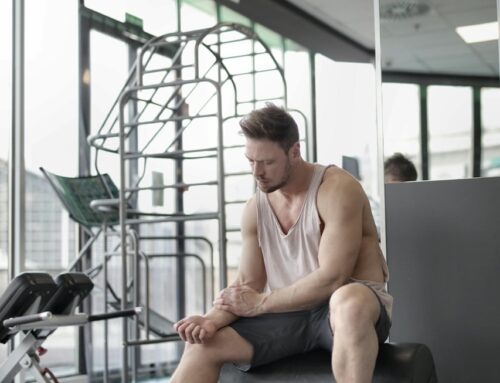Staying In Motion: The Impact of Massage on Athlete Mobility and Flexibility
Introduction:
Athletes constantly strive to optimize their physical prowess, pushing their bodies to reach unparalleled heights of performance. Mobility and flexibility are pivotal elements in this pursuit, acting as the catalysts for enhanced athletic execution, injury prevention, and expedited recovery. The significance of massage therapy as a medium to amplify these elements is gaining substantial acknowledgment. This article seeks to delve into the symbiotic relationship between massage therapy and enhanced mobility and flexibility, illuminating its transformative implications on athletic performance.
Understanding Mobility and Flexibility in Athletes:
Mobility is the ability to move a joint through its full range of motion effortlessly, while flexibility pertains to the capacity of the muscles to elongate optimally. For athletes, these aspects are the cornerstone of functional efficiency, enabling precise, powerful movements and safeguarding the musculoskeletal system against strains and sprains. They act as the harbinger of athletic equilibrium, optimizing performance and mitigating the risk of injuries, thus forming the crux of athletic conditioning and rehabilitation.
The Role of Massage Therapy in Athletic Performance:
Massage therapy, employing varied techniques, has emerged as an invaluable complement to athletic training regimes. It serves as a conduit for enhanced physiological and psychological well-being, facilitating improved performance, reduced muscle tension, and accelerated recovery. Through systematic manipulation of soft tissues, massage therapy not only alleviates stress and muscle stiffness but also acts as a catalyst in the athlete’s journey towards superior mobility and flexibility.
Impact of Massage on Mobility:
Massage therapy can significantly augment joint range of motion and muscle flexibility, essential components for athletes across all disciplines, be it runners, swimmers, or gymnasts. Enhanced mobility translates to more fluid, unrestricted movements, allowing athletes to execute intricate maneuvers and adapt to the dynamic demands of their respective sports effortlessly. For instance, a sprinter with optimized hip mobility can achieve longer strides, contributing to improved speed and performance.
Impact of Massage on Flexibility:
The lengthening and relaxation of muscles through massage play a pivotal role in elevating an athlete’s flexibility. Enhanced flexibility enables muscles to work more efficiently, reducing the incidence of overuse injuries and optimizing the force production and absorption. In sports where precision and range of motion are paramount, like gymnastics or martial arts, improved flexibility can be the determinant of superior execution and success.
Different Types of Massages for Athletes:
1. Sports Massage: Tailored to the needs of athletes, sports massage focuses on areas of the body that are overused and stressed from repetitive and often aggressive movements, offering myriad benefits like promoting flexibility and reducing fatigue.
2. Deep Tissue Massage: By targeting the inner layers of muscles, tendons, and fascia, this massage type is effective in treating chronic muscle pain and improving mobility and flexibility.
3. Swedish Massage, Myofascial Release, and Trigger Point Therapy: These specialized massages offer varied benefits, focusing on relaxing the entire body, releasing muscle tightness, and alleviating localized muscle pain, respectively, contributing to enhanced mobility and flexibility.
Case Studies/Examples:
A myriad of professional athletes and sports therapists vouch for the transformative impact of massage therapy on athletic mobility and flexibility. For instance, renowned sprinters and marathon runners have accredited optimized mobility and reduced muscle stiffness to regular sports massage sessions, citing substantial improvements in their running mechanics and stride lengths. Similarly, various case studies elucidate the role of deep tissue massage in mitigating muscle adhesions and enhancing muscle elasticity, paving the way for heightened athletic prowess and reduced injury prevalence.
Practical Tips:
Athletes aiming to harness the full spectrum of benefits from massage therapy should consider the following advice:
- Incorporate Regular Massage Sessions: Regular sessions are crucial for sustaining the benefits of massage, aiding in maintaining enhanced mobility and flexibility.
- Choose the Right Massage Type: Selecting a massage type aligning with individual athletic needs and preferences maximizes the therapeutic benefits.
- Frequency and Duration: Regular, but not excessive, sessions with appropriate duration are essential for availing optimal benefits without overstraining the muscles.
Conclusion:
Mobility and flexibility are the linchpins of athletic excellence, dictating the trajectory of performance, resilience, and longevity in sports. The infusion of massage therapy in athletic conditioning transcends the realms of relaxation and recovery, acting as a transformative agent for enhanced mobility and flexibility. Athletes, by embracing the multifaceted benefits of massage, can experience not just elevated physical well-being, but also unlock new dimensions of their athletic potential, staying in motion and perpetuating a cycle of constant growth and achievement.
The potential harbored by massage therapy in revolutionizing athletic capabilities is immense, making it an indispensable component of modern athletic training and recovery regimes. By adopting a holistic approach, incorporating tailored massage techniques, athletes can optimize their intrinsic physical capacities, reach new pinnacles of performance, and redefine the boundaries of what is possible in the athletic realm.




